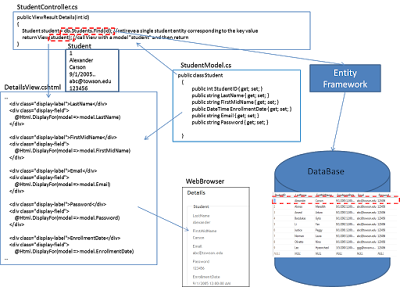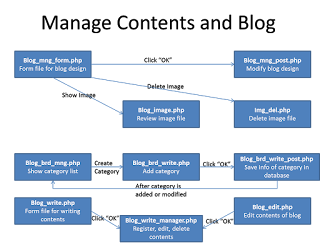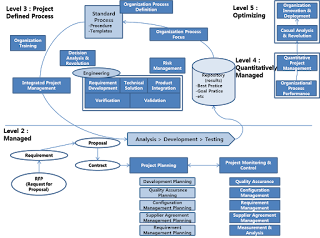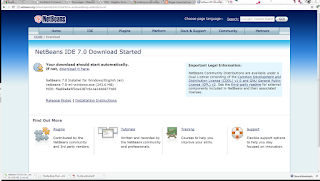
Labels
Friday, June 17, 2011
ASP .NET MVC3 Application Structure with Code(Read Data))

Saturday, June 11, 2011
Web Application MVC Project Structure in ASP .NET
ASP .NET MVC3 ViewBag
{
List<string> colors = new List<string>();
colors.Add("red");
colors.Add("green");
colors.Add("blue");
ViewData["listColors"] = colors;
ViewData["dateNow"] = DateTime.Now;
ViewData["name"] = "Hajan";
ViewData["age"] = 25;
return View();
}
My name is
<b><%: ViewData["name"] %>b>,
<b><%: ViewData["age"] %>b> years old.
<br />
I like the following colors:
p>
<ul id="colors">
<% foreach (var color in ViewData["listColors"] as List<string>){ %>
<li>
<font color="<%: color %>"><%: color %>font>
li>
<% } %>
ul>
<p>
<%: ViewData["dateNow"] %>
p>
{
List<string> colors = new List<string>();
colors.Add("red");
colors.Add("green");
colors.Add("blue");
ViewBag.ListColors = colors; //colors is List
ViewBag.DateNow = DateTime.Now;
ViewBag.Name = "Hajan";
ViewBag.Age = 25;
return View();
}
My name is
<b><%: ViewBag.Name %>b>,
<b><%: ViewBag.Age %>b> years old.
<br />
I like the following colors:
p>
<ul id="colors">
<% foreach (var color in ViewBag.ListColors) { %>
<li>
<font color="<%: color %>"><%: color %>font>
li>
<% } %>
ul>
<p>
<%: ViewBag.DateNow %>
p>
Change the body style in ASP .NET framework
Thursday, May 26, 2011
Software Requirements Specification Template and Example
- Business Goal
The business goal of the Global Personal Marketplace (GPM) system is to take advantage of the Internet and World Wide Web to radically improve the way private individuals and small companies buy and sell items.
- Buyer Business Benefits
Wednesday, May 25, 2011
Blog Program File
Useful SQL Query
Create Data Base Table for a blog
Friday, May 13, 2011
Blog Program with PHP and MySQL- 2
In the previous chapter, I showed structured view of all files for a blog program. Let's start to making a blog program.
Blog Program with PHP and MySQL- 1

Capability Maturity Model Integration (CMMI)

The Open Group Architecture Framework (TOGAF) -1

Enterprise Architecture
| | Advantages |
| A more efficient IT operation | - Lower costs for software development, support, and maintenance - Increased portability of application - Improved interoperability and easier system and network management - Improved ability to address critical enterprise-wide issues like security - Easier upgrade and exchange of system components |
| Better return on existing investment, reduced risk for future investment | - Reduced complexity in IT infrastructure - Maximum return on investment in existing IT infrastructure - The flexibility to make, buy, or out-source IT solutions - Reduced risk overall in new investment, and the costs of IT ownership |
| Faster, simpler, and cheaper procurement | - Buying decisions are simpler, because the information governing procurement is readily available in a coherent plan - The procurement process is faster — maximizing procurement speed and flexibility without sacrificing architectural coherence - The ability to procure heterogeneous, multi-vendor open systems |
| Data (What) | Function (How) | Network (Where) | People (Who) | Time (When) | Motivation (Why) | |
| Scope | List of things important in business | List of Business Processes | List of Business Locations | List of Important Organizations | List of Events | List of Business goal & Strategies |
| Business Model | Conceptual Data/Object Model | Business Process Model | Business Logistics System | Work Flow Model | Master Schedule | Business Plan |
| System Model | Logical Data Model | System Architecture Model | Distributed Systems Architecture | Human Interface Architecture | Processing Structure | Business Rule Model |
| Technology Model | Physical Data/Class Model | Technology Design Model | Technology Architecture | Presentation Architecture | Control Structure | Rule Design |
| Detailed Representation | Data Definition | Program | Network Architecture | Security Architecture | Timing Definition | Rule Specification |
| Functioning Enterprise | Usable Data | Working Function | Usable Network | Functioning Organization | Implemented Schedule | Working Strategy |
Business and IT Alignment
Wednesday, May 11, 2011
Enterprise Architecture
| | Advantages |
| A more efficient IT operation | - Lower costs for software development, support, and maintenance - Increased portability of application - Improved interoperability and easier system and network management - Improved ability to address critical enterprise-wide issues like security - Easier upgrade and exchange of system components |
| Better return on existing investment, reduced risk for future investment | - Reduced complexity in IT infrastructure - Maximum return on investment in existing IT infrastructure - The flexibility to make, buy, or out-source IT solutions - Reduced risk overall in new investment, and the costs of IT ownership |
| Faster, simpler, and cheaper procurement | - Buying decisions are simpler, because the information governing procurement is readily available in a coherent plan - The procurement process is faster — maximizing procurement speed and flexibility without sacrificing architectural coherence - The ability to procure heterogeneous, multi-vendor open systems |
Tuesday, May 10, 2011
Creating Simple Scripts using JavaScript
JavaScript is a script language that can be used for web development. There are a lot of useful functions in JavaScript. We can include JavaScript commands in the HTML document, and then the script you wrote will be executed in a web browser.






